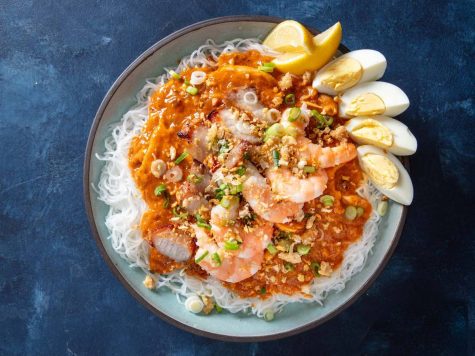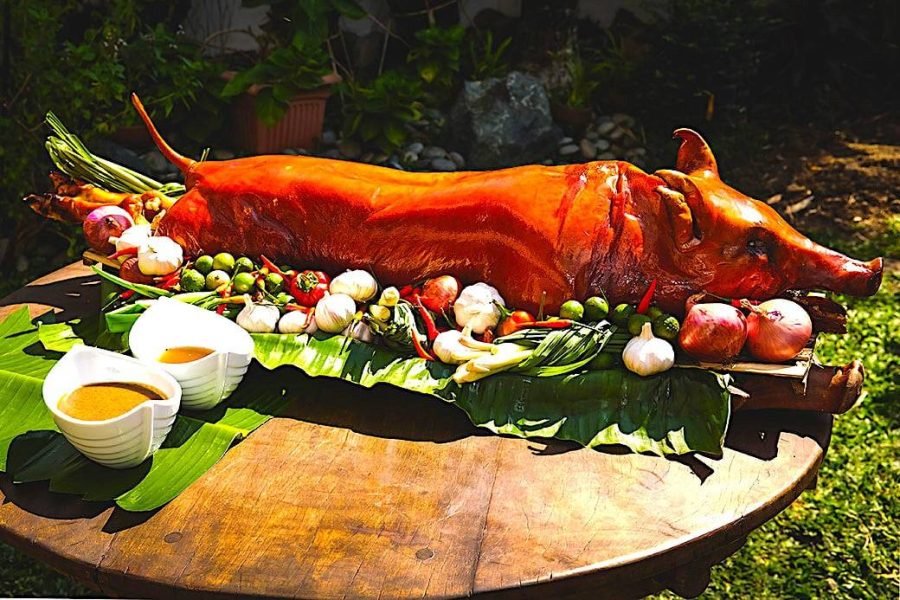October is Filipino Heritage Month–let’s eat!
October 28, 2022
Thirty years ago in 1992, the first annual Filipino American History Month commenced in October. This month was specifically chosen because on October 18, 1587, the first recorded Filipinos in the United States landed in present day Morro Bay, California. In 2009, Congress officially recognized October as FAHM in the United States.
Within the Moanalua High school populace, the ethnicities are very diverse. A majority of the students and staff on campus are of Asian descent, with Filipinos making up a large percentage of the group. Despite being one of the largest demographics on campus, there are no language classes or cultural clubs offered for Filipino students.
But since it is October, National Filipino History Month, it’s the perfect time to learn more about their culture. And one of the important aspects of the Phillipines is cooking and sharing meals with loved ones. Filipino food is diverse and delicious, using a variety of flavors and ingredients to create mouth watering dishes. The cuisine and culinary skill of the Philipines is unique and unmatched in the world.
The Philippines is a country made up of more than 7,600 islands and more than 180 ethnic groups, though most Filipinos today are part of 19 larger groups. Spain colonized the islands in the 1500s and introduced Christianity to the people. One value that has remained the same in the Filipino culture is over the centuries is the importance of family and friends. These dishes are some of the foods people would find at a gathering.
“My favorite Filipino food is palabok,” said sophomore Maria Robbins. “Especially the one that my mom makes at home. I have it for my birthday every year.”
Palabok is rice noodles served with shrimp sauce. The bright orange color of the sauce comes from annatto seeds. The noodles are boiled and added to the sauce. “The longer the noodles the longer the life,” Robbins adds. She said that her family uses many different toppings in the dish, such as deep fried garlic, pork rinds, green onions, slices of hard boiled eggs, and grilled mushrooms.
“It’s part of my culture and i’ts one way that I can go back to my roots,” she said. “It tastes good obviously, and it’s just something special for me.”
“At Filipino parties, I look forward to the lechon, adobo, and the lumpia,” junior Arjay Abrigado said.
“Lechon is like an entire pig but it’s cooked on. . .a rotating slow cooker,” he said.
Adobo is made from chicken or pork meat stewed in soy sauce, vinegar, peppercorns, and bay leaves. Lumpia is a fried spring roll that can have a variety of different fillings, such as pork and various vegetables. It is usually eaten with sweet chili dipping sauce. All three are popular Filipino foods that are commonly found at parties or on the dinner table.
“The texture and the taste, the skin and the meat of the pig just compliments the flavor and it’s just enjoyable to bite into,” Abrigado said about the lechon.


